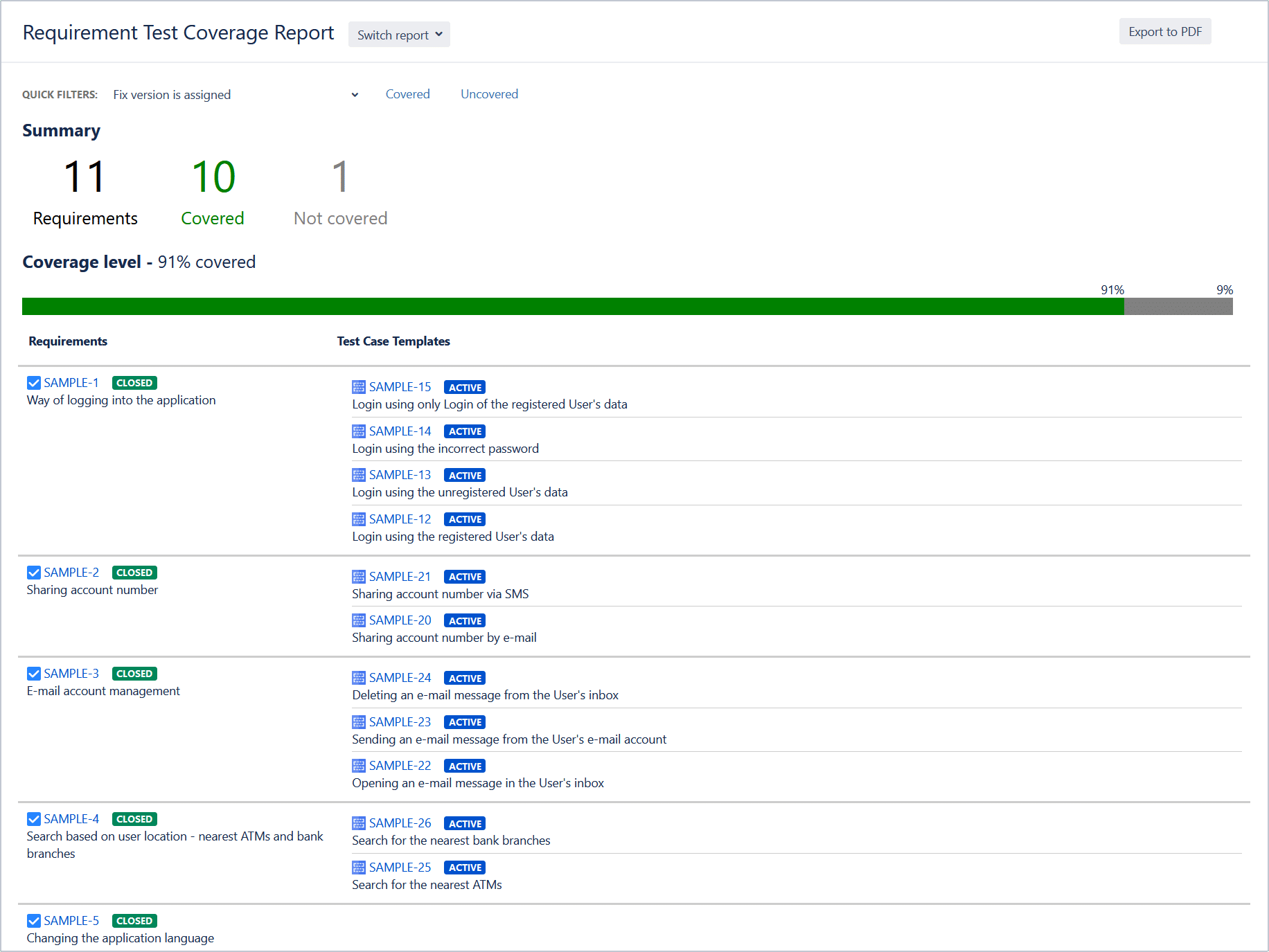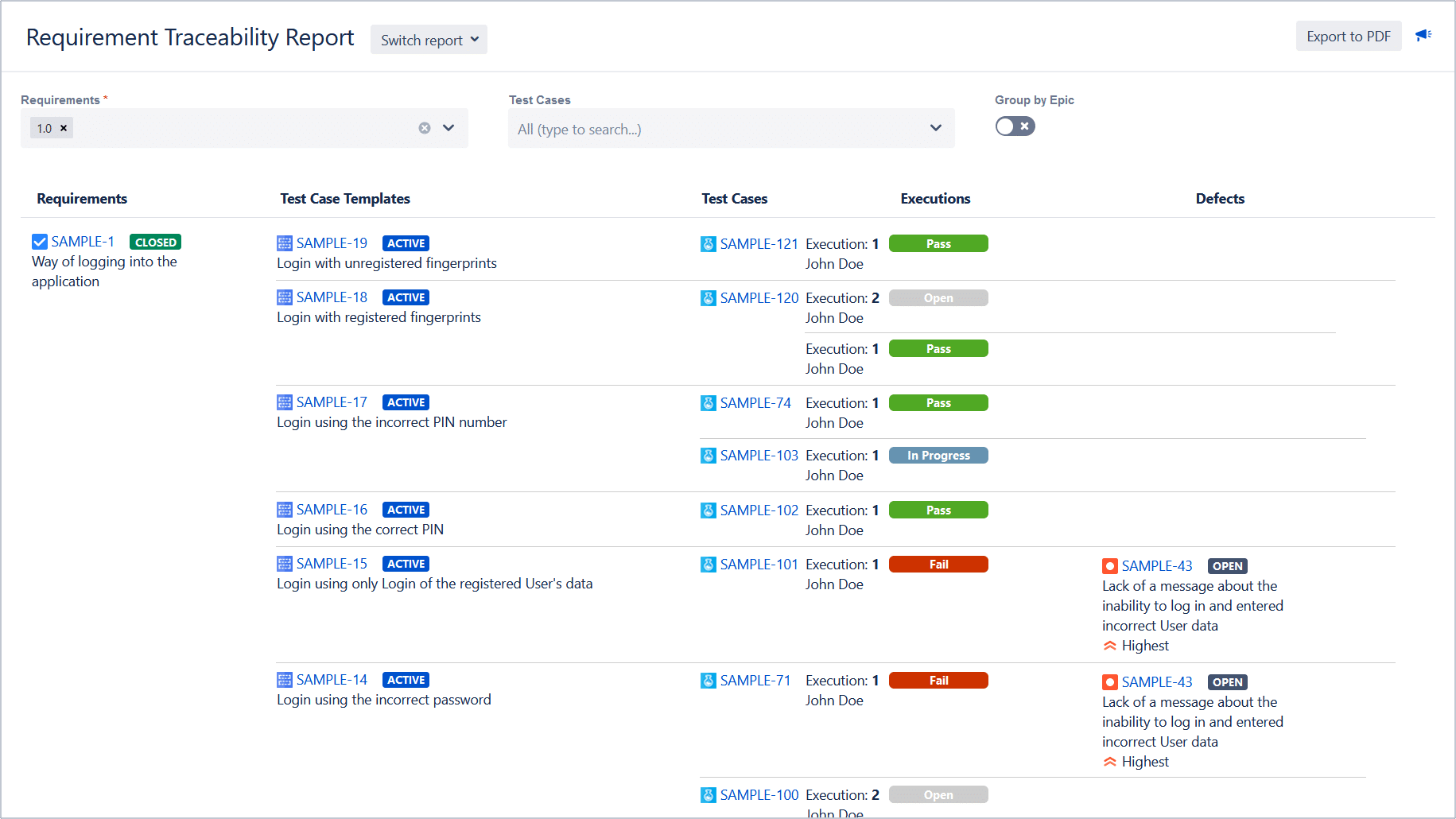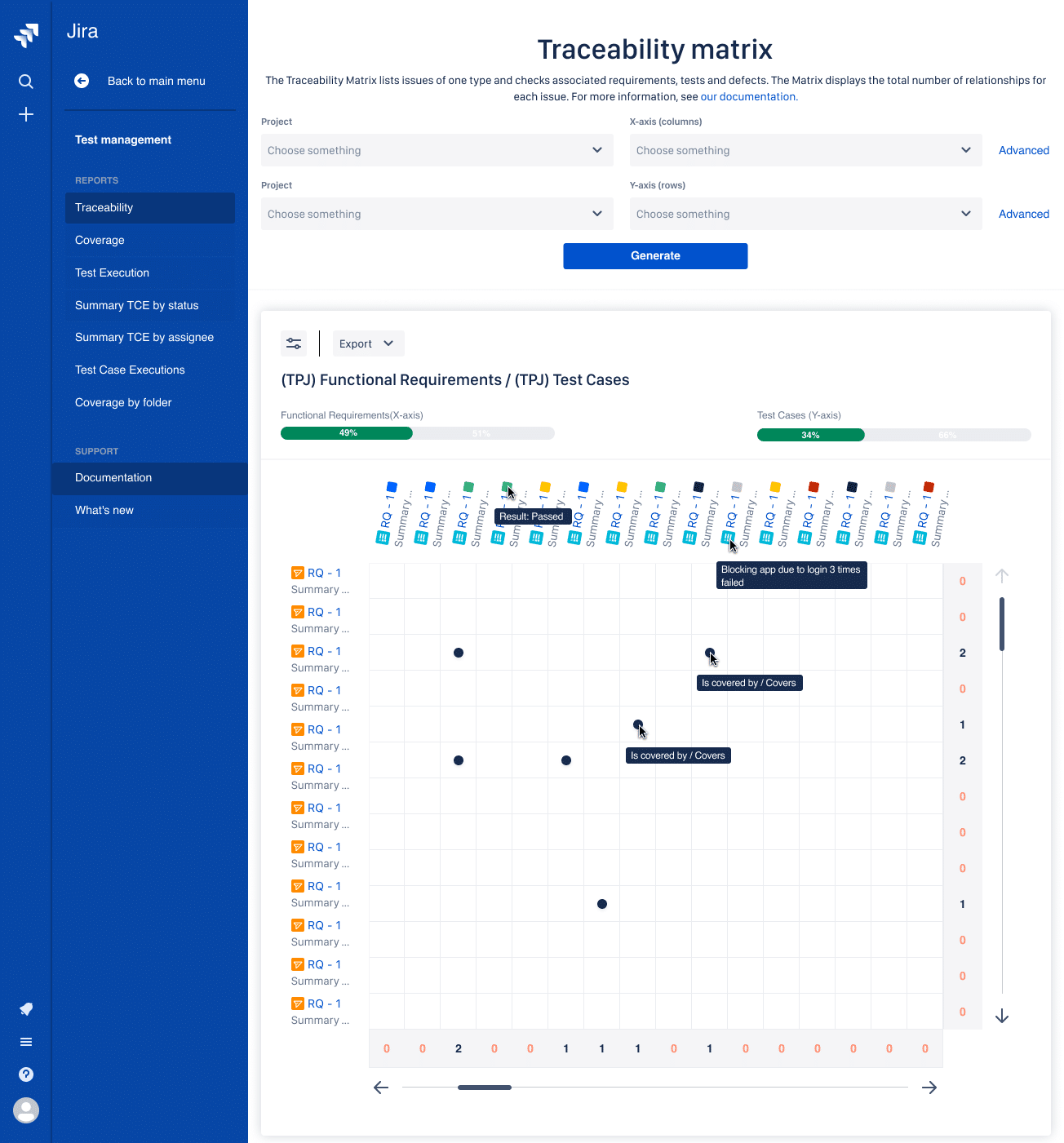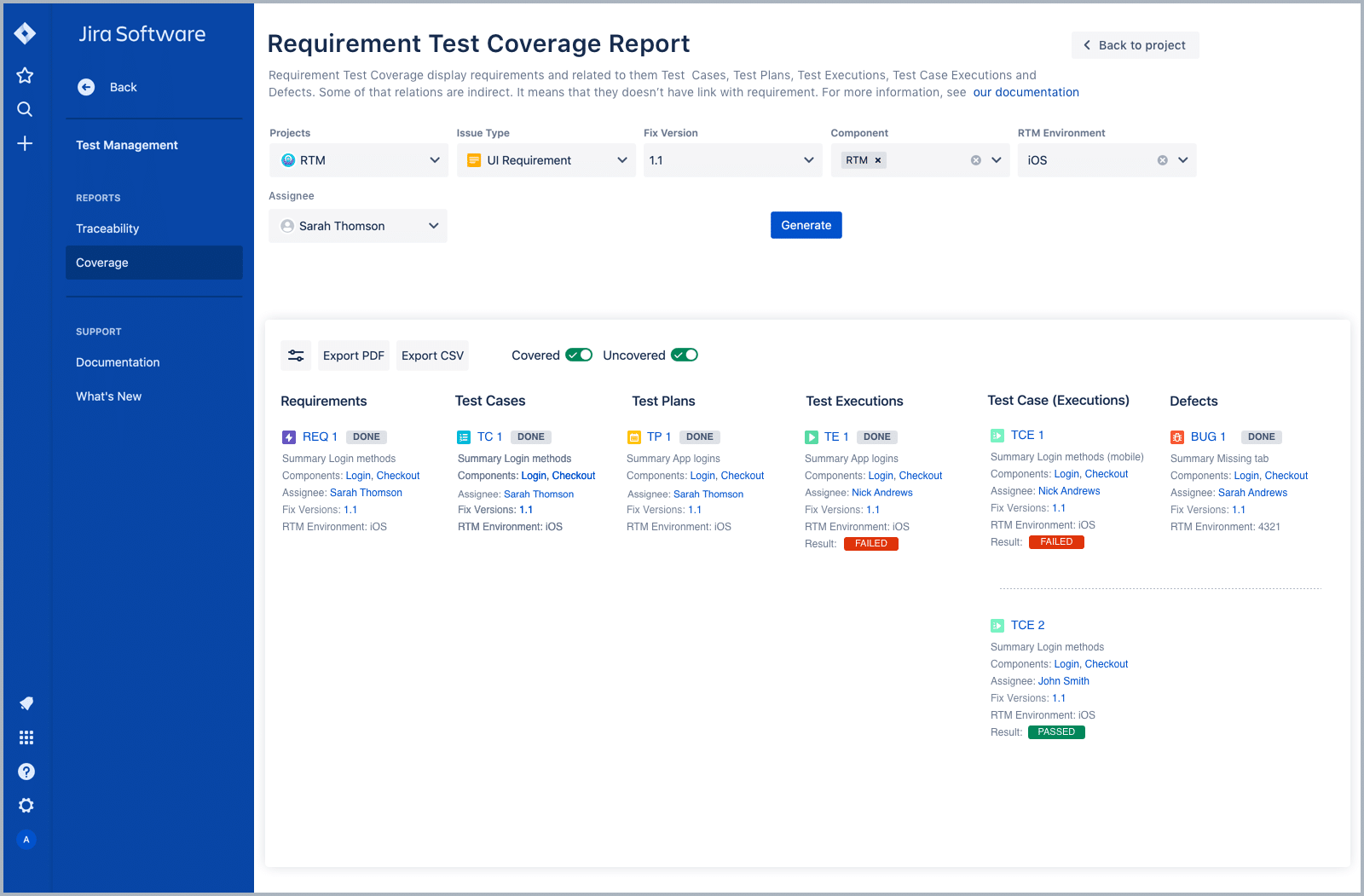Why requirements test coverage is key to success?

Updated by Tatiana Glazkova on June 23th, 2021
Requirements are an essential element of every software development process. These are the requirements that determine how the process will look and what quality criteria a given system, module or specific functionality has to match. Developers implement solutions and testers design tests on the basis of the information included in requirements. If requirements are clear and well-defined, the testers can start writing tests at the early stage of software development – when the solution is still under construction.
Major challenges for IT teams
According to the survey conducted among 150+ software development companies by GoodFirms, the major challenge for an IT team is adapting and meeting customers’ changing requirements (53.8% of the participants mentioned it). 17.7% of the surveyed companies noted that they regularly have to face problems with performance management and testing. Moreover, about 8.9% of developers point to a misunderstanding of the customers’ requirements.
GoodFirms, The survey conducted among 150+ software development companies
Covering requirements involves tracking the number and types of tests developed by testers and gauging progress before execution. For efficiency with many requirements, a coverage report provides swift, comprehensive information, reducing the need for individual checks.
Requirement-based tests
Approaching testing with requirements doesn’t mean that you will only design tests on the basis of requirements, but also that you will be checking requirements themselves at the stage when they are formulated.
By doing that, you’ll be able to eliminate mistakes that could soon turn out to be very costly. You will also be able to tell whether the requirements are complete, straightforward, testable, and coherent.
In the next stage of your work – preparing and verifying requirements – you will be adding test cases. It’s smart to do that before your software is ready. That way, when the first version of the application is delivered, you will save up a lot of time and go straight to testing, planning the next test cycles in advance.
If you do not link your tests to a requirement, you won’t be able to track which tests have been created. Consequently, this information is crucial for understanding your process stage.
Note: Tests need to realize business aspects of requirements and always focus on user expectations regarding the application.
Coverage level
How do you know that you have reached an adequate level of coverage when it comes to testing its requirements?
That question is tough to answer. In fact, t he answer may not exist, especially for functional testing (not code). It’s subjective and depends on factors like requirement priority or risk. You can assume that every requirement that describes a business need has to have at least one test designed for it that checks the so-called positive path. However, you often want to test a broader scope that includes alternative paths.
The requirement test coverage fact doesn’t reveal much, especially when you assume at least one test covers a requirement. That’s why it’s a good idea to look at each requirement separately.
While one test may be sufficient in one case, another requirement may demand a different scope of test design. Test analysts will need to use their experience and knowledge of business needs to determine if tests designed for specific requirements are comprehensive enough.
Checking coverage with Jira reports
If the version you are working with contains a large number of requirements, it may be difficult to check the coverage for each of them. Do you want to have access to crucial information and a quick view of requirements and related tasks?
What matters here are the unaddressed requirements. You don’t want to find yourself planning or, worse, executing the next test cycle only to discover untested requirements.
Before starting the test execution phase, you need to be sure that the range of tests for a given version is complete.
That’s where Jira Software comes in. By using it, you can save requirements in the form of issues. And by taking advantage of applications available on the Atlassian Marketplace, you can expand the functionalities of Jira Software to cover test management as well.
Two applications developed by Deviniti are an example of such an extension. They are TestFLO – Test Management for Jira and Requirements & Test Management for Jira (RTM).
TestFLO enables setting a complete testing process, as well as test case creation and connecting to the requirements. To verify the requirements coverage, there are two reports. They are a Requirement Test Coverage report and a Requirement Traceability one.
Discover TestFLO – Test Management for Jira
Excited to see how TestFLO can enhance your testing? Begin your TestFLO journey with a free 30-day trial and begin streamlining your testing workflow now!
The Requirement Test Coverage report displays the connection between Requirements and Tests, showing all requirements with attributes like status and summary. You can filter the requirements using their version or other saved filters.
TestFLO – Requirement Test Coverage Report
The Requirement Traceability report analyzes requirements vs tests vs execution of these tests vs reported errors. In other words, it gives you an overall picture of the requirements testing efforts in a release. Moreover, in TestFLO you can filter out requirements that have and haven’t been covered.
TestFLO – Requirement Traceability report
To check, if the requirements are covered by the tests in RTM, you can use a Traceability Matrix report and a Requirement Coverage report.
The Traceability Matrix provides the ability to compare any two basic requirement types on a many-to-many basis. However, it’s used not only to check the coverage of Requirements. You may use it also to compare two different types of test objects with each other to check their relationship. It means you can check the coverage of Test Cases by Test Plans, Test Plans by Test Executions, etc. The report also shows the number of Requirements covered by the Test Case and the percentage of those covered by all of them.
Traceability Matrix in RTM
As for the Requirement Coverage report in RTM, it keeps track of whether the Requirements are covered by any of the other attributes provided in the application.
Requirement Coverage report in RTM
Experience Requirements & Test Management for Jira
Unlock the potential of robust test reports and Jira integration. Check the app today and harness its benefits!
Key takeaway
Building software based on predefined requirements is popular because it helps identify bugs quickly and design related tests. Additionally, this process efficiently verifies user needs and measures requirement coverage.
Requirements coverage proves its utility by indicating the number of requirements addressed and the types of tests used for them. By assessing requirements coverage, you can tell whether you can start test execution for a given version or still need to design some more tests. Naturally, you can avoid situations where you never test specific requirements.








